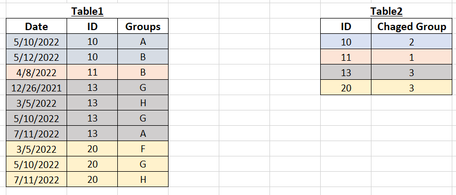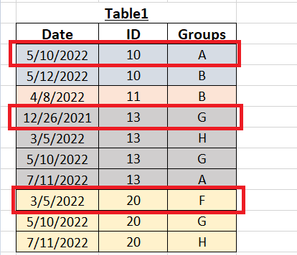- Power BI forums
- Updates
- News & Announcements
- Get Help with Power BI
- Desktop
- Service
- Report Server
- Power Query
- Mobile Apps
- Developer
- DAX Commands and Tips
- Custom Visuals Development Discussion
- Health and Life Sciences
- Power BI Spanish forums
- Translated Spanish Desktop
- Power Platform Integration - Better Together!
- Power Platform Integrations (Read-only)
- Power Platform and Dynamics 365 Integrations (Read-only)
- Training and Consulting
- Instructor Led Training
- Dashboard in a Day for Women, by Women
- Galleries
- Community Connections & How-To Videos
- COVID-19 Data Stories Gallery
- Themes Gallery
- Data Stories Gallery
- R Script Showcase
- Webinars and Video Gallery
- Quick Measures Gallery
- 2021 MSBizAppsSummit Gallery
- 2020 MSBizAppsSummit Gallery
- 2019 MSBizAppsSummit Gallery
- Events
- Ideas
- Custom Visuals Ideas
- Issues
- Issues
- Events
- Upcoming Events
- Community Blog
- Power BI Community Blog
- Custom Visuals Community Blog
- Community Support
- Community Accounts & Registration
- Using the Community
- Community Feedback
Register now to learn Fabric in free live sessions led by the best Microsoft experts. From Apr 16 to May 9, in English and Spanish.
- Power BI forums
- Forums
- Get Help with Power BI
- Desktop
- Re: Counting of Old Dates for a Specific Condition
- Subscribe to RSS Feed
- Mark Topic as New
- Mark Topic as Read
- Float this Topic for Current User
- Bookmark
- Subscribe
- Printer Friendly Page
- Mark as New
- Bookmark
- Subscribe
- Mute
- Subscribe to RSS Feed
- Permalink
- Report Inappropriate Content
Counting Old Dates for a Specific Condition
Hello people,
How can I deal with the following situation? I have Table1 that has all the Groups that certain ID has gone through. The Table2 has the quantity of distinct Groups that the ID has gone through.
For example, ID=13 from Table1, we can see that it has made 4 group change (G-H-G-A), but we can say that it went through only 3 groups, (G-H-A) and that's what Table2 say to us.
Let's suppose that this table is always updated with new IDs.
So, how can I count the Groups from IDs that have a Changed Group > 1 and count only the group in the oldest Date? So, in this hypothetical case, we would count only the oldest groups from ID 10, 13 and 20.
I am very grateful for your attention.
Solved! Go to Solution.
- Mark as New
- Bookmark
- Subscribe
- Mute
- Subscribe to RSS Feed
- Permalink
- Report Inappropriate Content
Hi @Mentzer ,
Here I suggest you to try this code to create a calculated column.
Count Group in Oldest Date =
VAR _Oldest_Date =
CALCULATE (
MIN ( Table1[Date] ),
FILTER ( Table1, Table1[ID] = EARLIER ( Table2[ID] ) )
)
VAR _GROUPinOldestDate =
CALCULATE (
SELECTEDVALUE ( Table1[Group] ),
FILTER (
Table1,
Table1[ID] = EARLIER ( Table2[ID] )
&& Table1[Date] = _Oldest_Date
)
)
VAR _Count_Group =
CALCULATE (
COUNT ( Table1[Group] ),
FILTER (
Table1,
Table1[ID] = EARLIER ( Table2[ID] )
&& Table1[Group] = _GROUPinOldestDate
)
)
RETURN
IF ( Table2[Change Group] > 1, _Count_Group, BLANK () ) Result is as below.
Best Regards,
Rico Zhou
If this post helps, then please consider Accept it as the solution to help the other members find it more quickly.
- Mark as New
- Bookmark
- Subscribe
- Mute
- Subscribe to RSS Feed
- Permalink
- Report Inappropriate Content
Hi @Mentzer
Please try
Count Changed =
SUMX ( VALUES ( Table1[ID] ), IF ( [Changed Group] > 1, 1 ) )- Mark as New
- Bookmark
- Subscribe
- Mute
- Subscribe to RSS Feed
- Permalink
- Report Inappropriate Content
In the followin part, the Changed Group is not recognized:
IF ( [Changed Group] > 1, 1 )
- Mark as New
- Bookmark
- Subscribe
- Mute
- Subscribe to RSS Feed
- Permalink
- Report Inappropriate Content
Hi @Mentzer ,
Here I suggest you to try this code to create a calculated column.
Count Group in Oldest Date =
VAR _Oldest_Date =
CALCULATE (
MIN ( Table1[Date] ),
FILTER ( Table1, Table1[ID] = EARLIER ( Table2[ID] ) )
)
VAR _GROUPinOldestDate =
CALCULATE (
SELECTEDVALUE ( Table1[Group] ),
FILTER (
Table1,
Table1[ID] = EARLIER ( Table2[ID] )
&& Table1[Date] = _Oldest_Date
)
)
VAR _Count_Group =
CALCULATE (
COUNT ( Table1[Group] ),
FILTER (
Table1,
Table1[ID] = EARLIER ( Table2[ID] )
&& Table1[Group] = _GROUPinOldestDate
)
)
RETURN
IF ( Table2[Change Group] > 1, _Count_Group, BLANK () ) Result is as below.
Best Regards,
Rico Zhou
If this post helps, then please consider Accept it as the solution to help the other members find it more quickly.
- Mark as New
- Bookmark
- Subscribe
- Mute
- Subscribe to RSS Feed
- Permalink
- Report Inappropriate Content
Hi @Mentzer
Count Changed =
SUMX ( VALUES ( Table1[ID] ), IF ( DISTINCTCOUNT ( Table1[Groups] ) > 1, 1 ) )- Mark as New
- Bookmark
- Subscribe
- Mute
- Subscribe to RSS Feed
- Permalink
- Report Inappropriate Content
@Mentzer check this video on my YT channel and tweak it as you see fit How to get value of each product based on the most recent transaction - Power BI - YouTube
✨ Follow us on LinkedIn and  to our YouTube channel
to our YouTube channel
I would ❤ Kudos if my solution helped. 👉 If you can spend time posting the question, you can also make effort to give Kudos to whoever helped to solve your problem. It is a token of appreciation!
⚡ Visit us at https://perytus.com, your one-stop shop for Power BI-related projects/training/consultancy.
Subscribe to the @PowerBIHowTo YT channel for an upcoming video on List and Record functions in Power Query!!
Learn Power BI and Fabric - subscribe to our YT channel - Click here: @PowerBIHowTo
If my solution proved useful, I'd be delighted to receive Kudos. When you put effort into asking a question, it's equally thoughtful to acknowledge and give Kudos to the individual who helped you solve the problem. It's a small gesture that shows appreciation and encouragement! ❤
Did I answer your question? Mark my post as a solution. Proud to be a Super User! Appreciate your Kudos 🙂
Feel free to email me with any of your BI needs.
- Mark as New
- Bookmark
- Subscribe
- Mute
- Subscribe to RSS Feed
- Permalink
- Report Inappropriate Content
Your solution is very good, sir. Thank you very much for the video.
But when performing the first formula with TOPN, it gives a memory error and it is not possible to perform the calculations. Is there any other solution?
Helpful resources

Microsoft Fabric Learn Together
Covering the world! 9:00-10:30 AM Sydney, 4:00-5:30 PM CET (Paris/Berlin), 7:00-8:30 PM Mexico City

Power BI Monthly Update - April 2024
Check out the April 2024 Power BI update to learn about new features.

| User | Count |
|---|---|
| 109 | |
| 99 | |
| 77 | |
| 66 | |
| 54 |
| User | Count |
|---|---|
| 144 | |
| 104 | |
| 102 | |
| 87 | |
| 64 |



